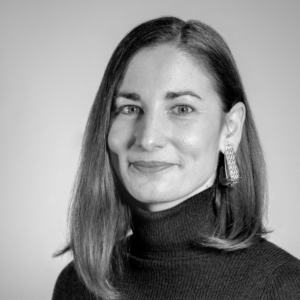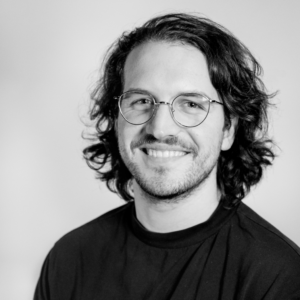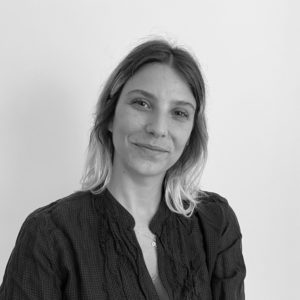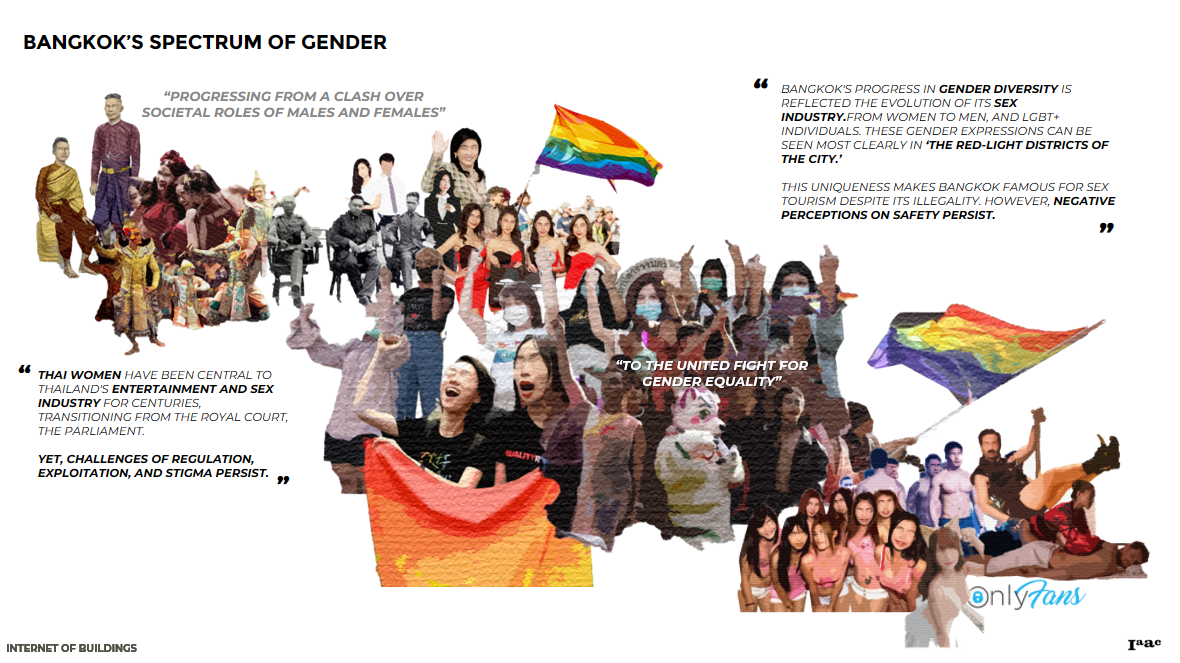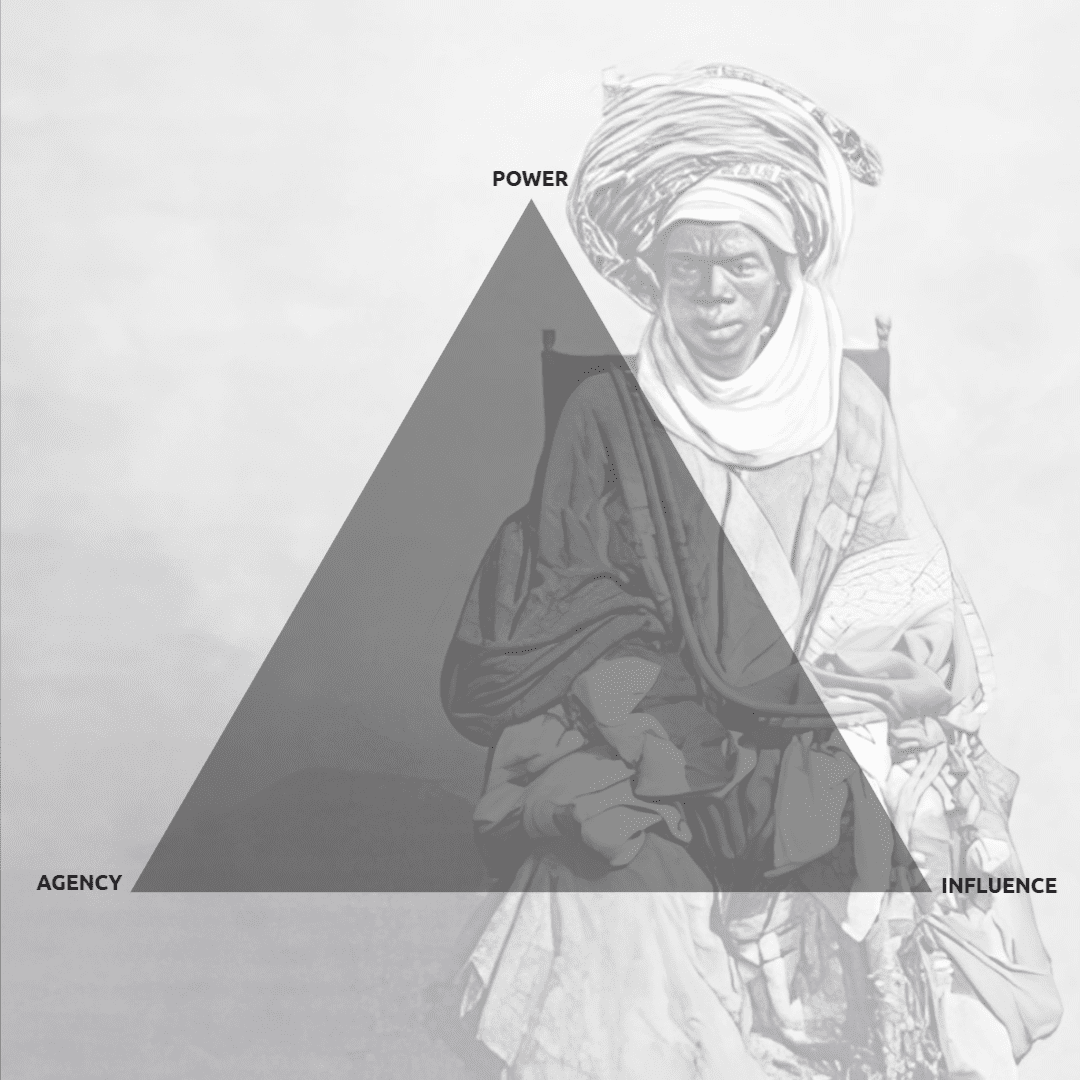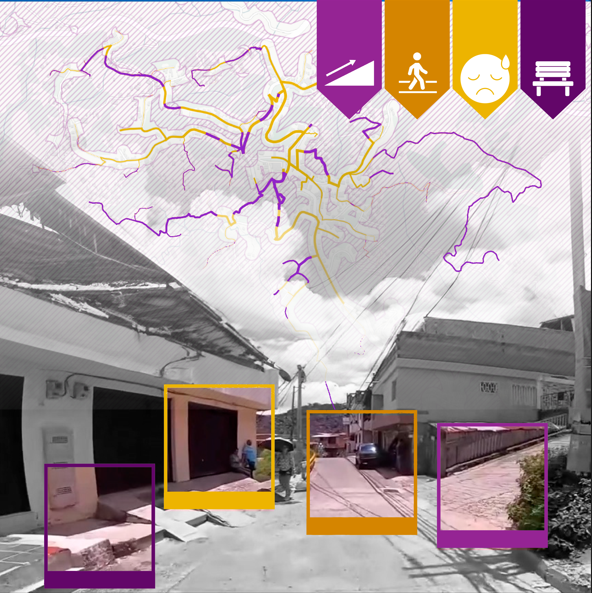
photo credits: Gender-segregated graphs that underscore substantial disparities in the spatial behavior of boys and girls, based on the physical design of the space by Architektoniczki (Honrata Grzesikowska & Ewelina Jaskulska) 2023.
Description:
Historically, architecture and urban planning prioritised a ‘one-man-fit-all’ approach to behaviours and needs, resulting in non-gender-neutral cities, and this remains the case today. Women, girls, sexual and gender minorities of all ages and abilities have been under-served and under-represented in the urban planning and design fields, resulting in urban environments that not only fail to meet their needs, but often increase their vulnerability in navigating the city. Moreover, gender issues often come hand in hand with other social inequalities often perpetuated or consolidated by the space itself (Kern, 2019). This calls for designers to rethink our approach to design in order to not only better represent the population in its entirety, but to understand how the urban environment can become a space for everyone to flourish.
Today, cities have more women-headed households and more women are participating in the formal economy than ever. Women are recognised as “a city’s greatest asset, and contribute heavily to sustainable urban development” (UN-HABITAT, 2012). While efforts are being made to promote inclusivity in academia, practice, and policymaking, existing inclusive design strategies often focus on specific topics, such as physical disability, without considering gender or age within that group, not to mention intersectionality.
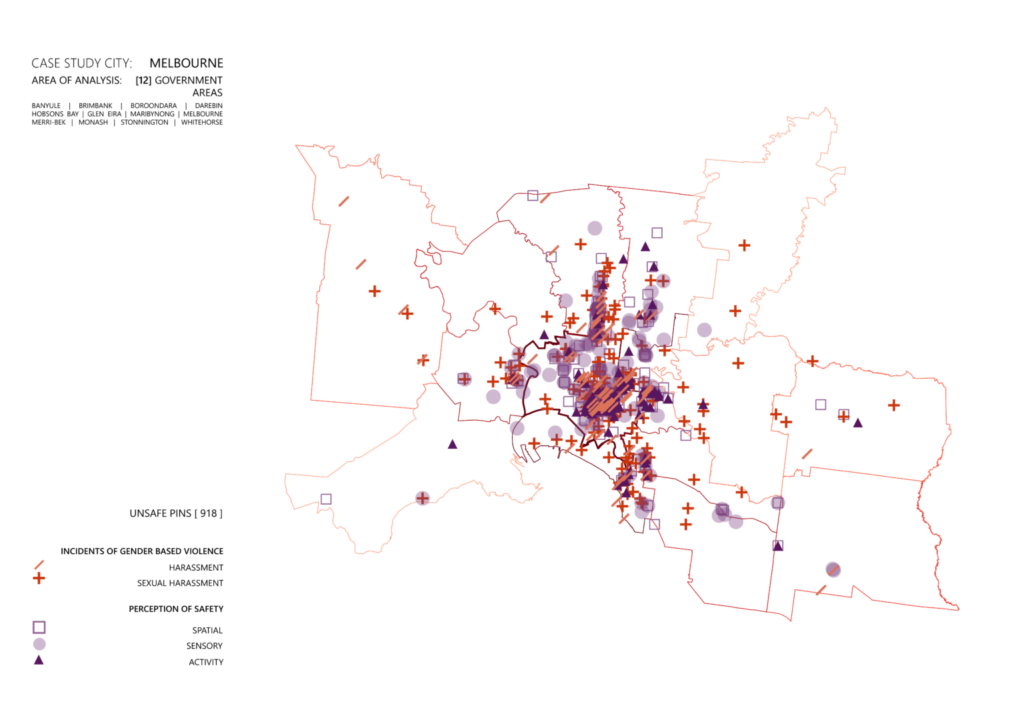
photo credits: GENDERED GEOGRAPHIES MaCT01 – 2022-2023 by the students: Vasiliki Bakomichali and Julia Thomas, Seminar: Urban Sensing, Faculty: Angelos Chronis, Fani Kostourou, Jorge Sainz de Aja Curbelo and Céleste Richard. (Free to Be dataset: Spatial Representation)
Addressing these challenges requires a novel approach to incorporate gender perspectives analysis and designs into city governance and world making, thus mitigating gender inequalities in urban contexts. Drawing upon the key concepts of “gender-equal space” and the ability to “envision the equitable future”, this studio will undertake this challenge, looking into 4 different contexts across the globe, and delving into what it means to develop gender inclusive design within these contexts. This process will be developed with the support of data driven design, intended to capture the specificities of each of these contexts, as well as their intrinsic complexities, and leverage these to design within the realm of intersectionality, challenging the one size fits all and the single figure user, towards gender inclusive urban environments.

photo credits: PLAYLAND MaCT 2018/2019 by Students: Maria Uporova and Polina Skorina, Faculty: Vicente Guallart, Mathilde Marengo, Honorata Grzesikowsa
Learning Objectives
At course completion the student will:
– understand critical aspects in relation to gender- sensitive urban planning related to designing urban spaces, transportation systems, housing, and policies in a way that reflects the unique needs and experiences of diverse genders in the city.
– understand and apply spatial equity based approaches for the analysis and design of urban spaces.
– understand and apply data driven processes in order to determine the inclusivity of spaces with respect to specific criteria, and leverage these processes to respond to the criticalities identified through design.
– further develop critical thinking and design thinking approaches in approaching urban challenges in heterogeneous contexts.





